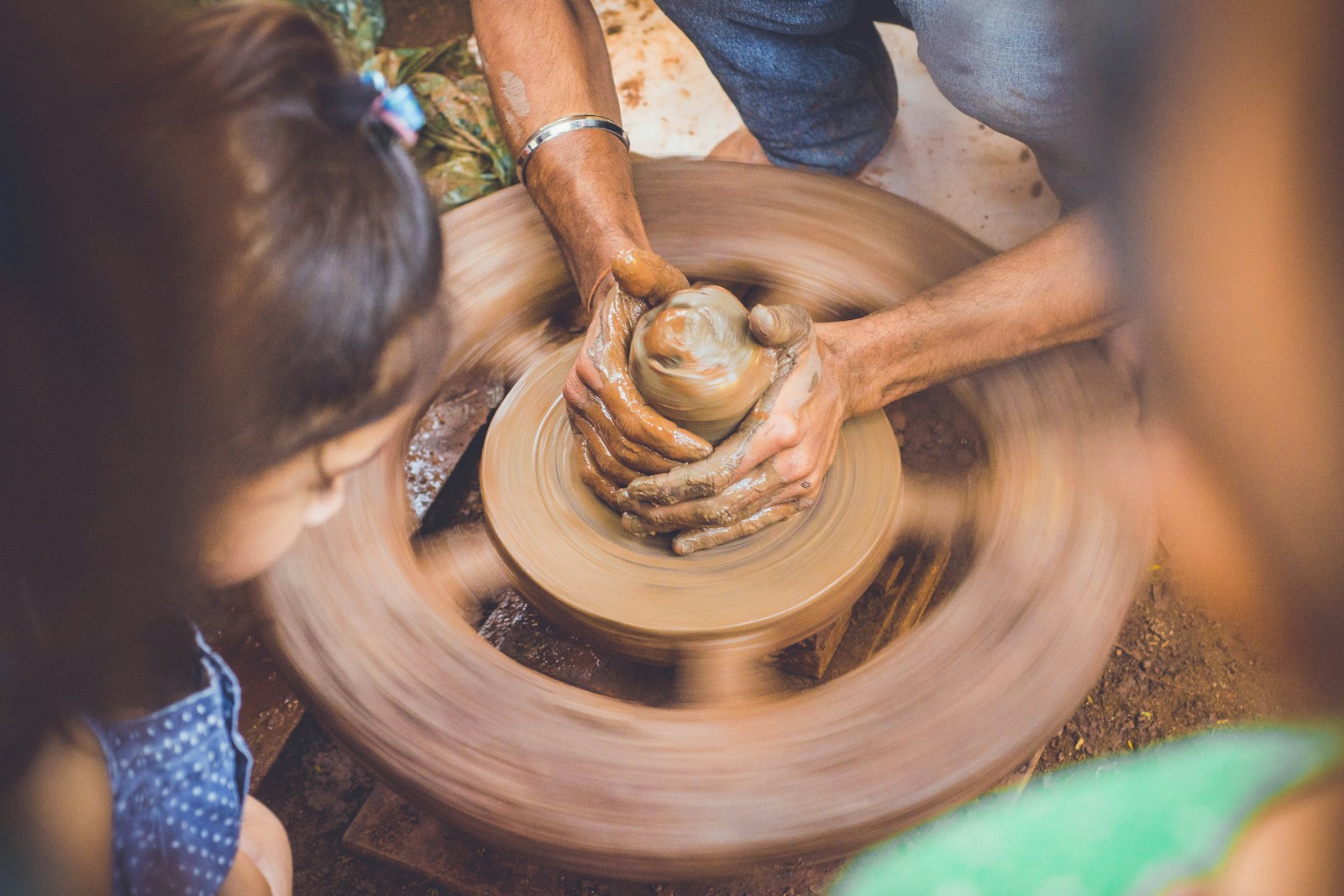Creative mediums—such as art, music, dance, and drama—can be powerful therapeutic tools for children with disabilities. These mediums offer an alternative way for children to express themselves, process emotions, improve motor and cognitive skills, and build social connections. For children with disabilities, creative therapies provide a non-verbal outlet that fosters self-expression, emotional regulation, and personal growth, making them an essential part of holistic development.
In this article, we’ll explore various creative mediums that can be used therapeutically for children with disabilities, how they work, and their benefits.
1. Art Therapy
Art therapy uses creative activities like painting, drawing, sculpting, and crafting to help children express themselves in ways that verbal communication may not allow. It can be especially beneficial for children with cognitive or physical disabilities who may find traditional forms of communication challenging.
How It Works:
Art therapy encourages children to create visual representations of their thoughts, feelings, and experiences. Therapists guide the process, helping children interpret their artwork and facilitating conversations about the emotions behind their creations. This process can promote emotional healing, improve self-esteem, and help children develop new coping strategies.
Benefits for Children with Disabilities:
- Enhances Fine Motor Skills: Manipulating brushes, pencils, or clay helps improve hand-eye coordination and fine motor skills.
- Promotes Self-Expression: Children with speech or communication difficulties can use art as a non-verbal way to communicate their thoughts and emotions.
- Reduces Anxiety and Stress: Creating art can be a calming, therapeutic activity that helps children process difficult emotions and reduce stress.
- Builds Confidence: Completing a creative project can give children a sense of accomplishment and boost their self-confidence.
Activities to Try:
- Finger painting or using sponges for children with limited fine motor skills.
- Collage-making with magazine cutouts or textured materials.
- Clay sculpting for tactile sensory engagement.
2. Music Therapy
Music therapy uses the power of music to improve physical, emotional, cognitive, and social functioning. Whether through listening to music, singing, playing instruments, or even composing, music therapy can help children with disabilities engage in creative expression and foster emotional growth.
How It Works:
Music therapists use rhythm, melody, and sound to encourage self-expression, communication, and emotional regulation. Music therapy can be tailored to a child’s specific needs, whether it’s improving speech through singing or enhancing motor skills through instrument playing.
Benefits for Children with Disabilities:
- Improves Communication: Music therapy can support children with speech and language delays by improving verbal communication through song and rhythm.
- Enhances Motor Skills: Playing instruments, such as drums or tambourines, can help develop coordination and fine motor skills.
- Encourages Emotional Expression: Music allows children to express complex emotions in a safe, non-verbal way. It can also be used to regulate mood and reduce feelings of anxiety or frustration.
- Supports Cognitive Development: Learning rhythms, lyrics, or melodies helps enhance memory and cognitive skills, which is beneficial for children with developmental delays.
Activities to Try:
- Singing along to favorite songs or making up new lyrics.
- Using percussion instruments like drums or tambourines to create rhythmic patterns.
- Creating playlists of soothing or uplifting music to use for emotional regulation.
3. Dance and Movement Therapy
Dance and movement therapy (DMT) focuses on using body movements to improve emotional, cognitive, physical, and social well-being. For children with disabilities, movement can be a powerful tool for expressing emotions, improving coordination, and fostering body awareness.
How It Works:
In dance and movement therapy, children are encouraged to use their bodies to express feelings and emotions. Therapists use structured and freeform movement exercises to help children improve their physical mobility, develop body awareness, and connect with their emotions through movement.
Benefits for Children with Disabilities:
- Enhances Physical Coordination: Dance and movement activities help improve motor skills, balance, and coordination, particularly for children with physical disabilities.
- Builds Body Awareness: DMT fosters a stronger connection between body and mind, helping children develop spatial awareness and body control.
- Boosts Confidence and Self-Esteem: Mastering new movements or participating in group dance activities can improve a child’s confidence and sense of accomplishment.
- Provides Emotional Release: Dance and movement allow children to express emotions physically, which can help reduce anxiety, frustration, or anger.
Activities to Try:
- Simple stretching and breathing exercises for body awareness and relaxation.
- Freeform dancing to different types of music to encourage self-expression.
- Guided movement activities, such as mirroring exercises, where the child follows the therapist’s movements.
4. Drama and Role-Playing Therapy
Drama therapy uses acting, role-playing, and storytelling to help children explore emotions, improve social skills, and build confidence. This medium is particularly useful for children who may struggle with social interaction, as it provides a safe environment to practice communication and social skills.
How It Works:
Drama therapy engages children in creative storytelling, role-playing, and improvisation. Through these activities, children can explore different perspectives, practice social interactions, and express emotions in a playful, controlled environment.
Benefits for Children with Disabilities:
- Improves Social Skills: Role-playing helps children practice social scenarios, improving their communication and interaction with others.
- Builds Empathy: By stepping into different roles or characters, children learn to see the world from different perspectives, fostering empathy.
- Boosts Confidence: Performing in front of others or taking on different roles can help children overcome social anxiety and build self-esteem.
- Encourages Emotional Processing: Drama therapy provides a safe space for children to act out their emotions and explore feelings they may find difficult to express verbally.
Activities to Try:
- Role-playing different social situations, such as introducing themselves or handling a disagreement with a friend.
- Acting out stories or favorite books with different characters.
- Using puppets or dolls to create imaginary scenarios that allow children to express emotions and practice social interactions.
5. Writing and Storytelling Therapy
For children who enjoy expressing themselves through words, writing and storytelling can be a therapeutic outlet. Writing therapy encourages children to explore their thoughts, feelings, and experiences through creative storytelling, journaling, or poetry.
How It Works:
Writing therapy helps children put their emotions and experiences into words, providing a structured outlet for expression. Whether through journaling, storytelling, or poetry, children can process difficult emotions and explore their internal world creatively.
Benefits for Children with Disabilities:
- Enhances Communication Skills: Writing and storytelling help children develop language and communication skills, which is especially useful for those with speech or language delays.
- Provides Emotional Release: Writing about their feelings can help children process complex emotions and reduce anxiety or frustration.
- Encourages Imagination and Creativity: Storytelling allows children to use their imagination and creativity, boosting cognitive development and problem-solving skills.
- Boosts Confidence: Completing a written piece or story gives children a sense of achievement, boosting their confidence and self-worth.
Activities to Try:
- Journaling exercises where children can write about their day or their emotions.
- Collaborative storytelling, where you start a story and your child adds to it, encouraging creative thinking and expression.
- Writing short poems or stories about imaginary characters that reflect the child’s thoughts or feelings.
6. Sensory Play as Therapy
For children with sensory processing issues, sensory play can be a therapeutic way to engage the senses while fostering emotional regulation and cognitive development. Sensory play involves using materials that stimulate the senses, such as sand, water, clay, or textured objects.
How It Works:
Sensory play therapy helps children with disabilities, particularly those on the autism spectrum or with sensory processing disorders, regulate their sensory input. Activities are designed to engage multiple senses, which can help improve focus, reduce anxiety, and enhance cognitive and motor development.
Benefits for Children with Disabilities:
- Improves Sensory Processing: Sensory play helps children become more comfortable with different textures, sounds, and sensations, which can improve sensory integration.
- Enhances Focus and Attention: Engaging in sensory activities can help children improve concentration and focus, which is often a challenge for children with developmental disorders.
- Reduces Anxiety: Sensory play can have a calming effect, helping children relax and manage stress or overstimulation.
- Improves Motor Skills: Manipulating different sensory materials, such as sand or water, helps develop fine and gross motor skills.
Activities to Try:
- Play with sensory bins filled with rice, beans, or water beads.
- Use clay, playdough, or kinetic sand to engage tactile senses.
- Create a sensory table with objects of various textures, colors, and shapes for exploratory play.
Conclusion
Creative mediums offer a versatile and impactful way to support children with disabilities therapeutically. Whether through art, music, dance, drama, writing, or sensory play, these activities provide children with alternative ways to express themselves, build confidence, improve motor skills, and develop social connections. Each medium can be tailored to the individual needs and abilities of the child, making these approaches accessible and beneficial for a wide range of disabilities.
By incorporating these creative therapies into their lives, children with disabilities can experience emotional healing, greater self-expression, and a stronger sense of empowerment, helping them navigate the world with confidence and resilience.




